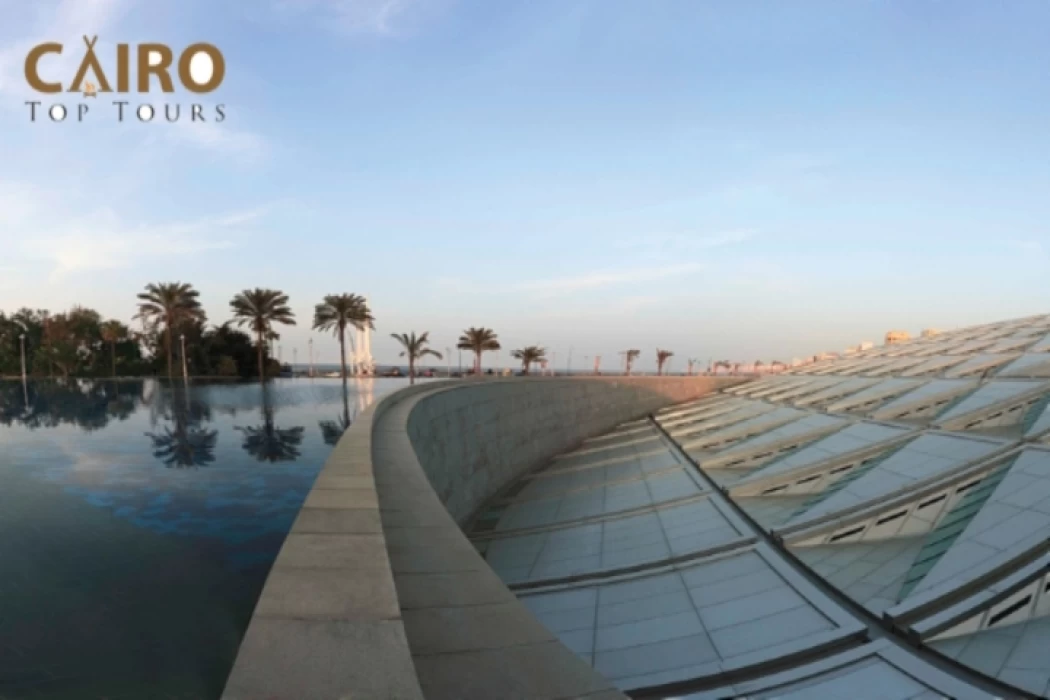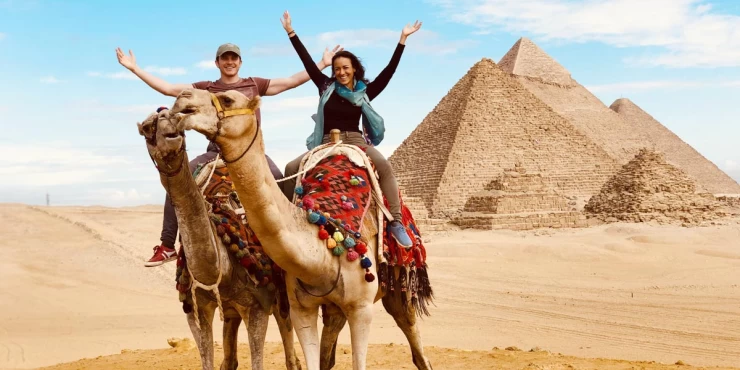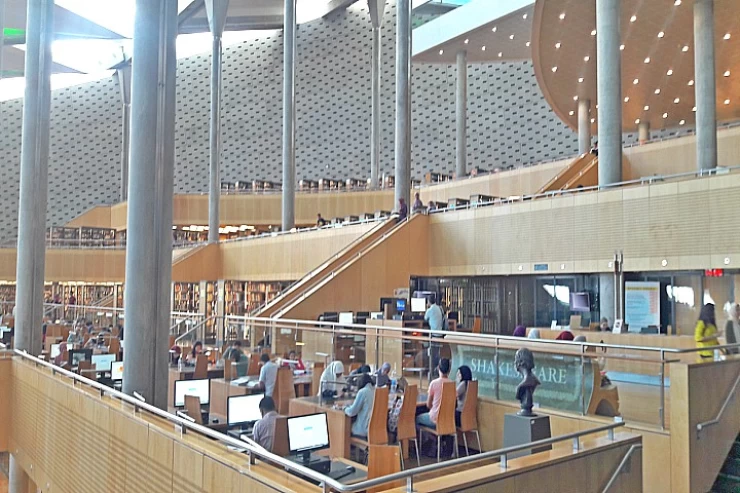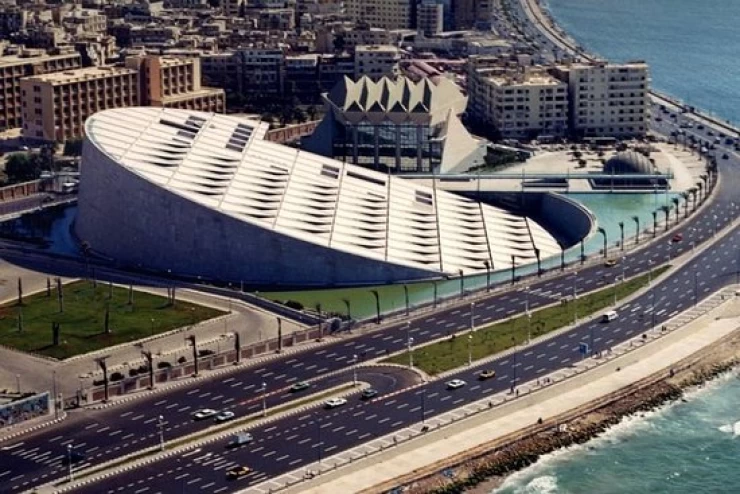
亚历山大图书馆
亚历山大图书馆
这里被称为皇家图书馆和博物馆,是亚历山大图书馆,是全世界科学和知识的灯塔,因为它在许多世纪以来都是最全面和最大的图书馆。
亚历山大图书馆建立于托勒密国时代,托勒密国是马其顿帝国的一部分,源于希腊文明。据说亚历山大大帝是第一个下令建造亚历山大图书馆的人。后来,在托勒密统治埃及期间,托勒密一世决定建造亚历山大图书馆。
亚历山大图书馆的真正创始人是托勒密二世(Philadelphus),他从公元前 246 年到公元前 285 年统治埃及长达 39 年。亚历山大图书馆在古代不断发展科学和知识,7 个世纪以来培养了许多学者。
图书馆大火
公元前 48 年,埃及艳后克里奥帕特拉的弟弟小托勒密认为凯撒大帝支持克里奥帕特拉反对他而围攻他,凯撒大帝在亚历山大图书馆前的地中海岸边烧毁了近百艘船只,燃烧船只的大火蔓延到了图书馆。
现代的亚历山大图书馆
亚历山大图书馆在沦为废墟几个世纪后,被视为失落的文物,在现代得以复兴。新的亚历山大图书馆建在旧图书馆的原址上。
图书馆的高度为十层,所有低层都位于水面以下,建筑主体下沉到地面以下,以保护馆内珍贵的藏书不受外部环境的影响。许多开放式的阅览大厅是亚历山大图书馆的突出特点,其中包括 2500 个通向 7 个阳台的阅览区,书籍被存放在这些阳台下,以方便读者取阅。
The Library of Alexandria was the world's largest library it was established by King Ptolemy I and it housed about 900,000 manuscripts throughout his reign.
The original library had all the article's secrets regarding the traditional civilization of Egypt.
Library of Alexandria
Its destruction has been attributed to totally different actors, however, no version has been tried, the sole clear issue is that it finally disappeared, and it was not till 1987 that a world project wanted to rescue the cultural significance of the location and therefore the image it represents, began the legendary collective imagined library of humanity. UNESCO coordinated the project and eventually, the name the Alexandria Library, it was formally opened in 1996.
As well to its massive archive, which can withstand carrying about twenty million copies, and a space for over 2,000 simultaneous scholars, it also has a planetarium, and a Science Museum, one for calligraphy and the other one for archaeology, in addition to a laboratory of restoration, a modern printing press and a library specialized for children and people with special abilities.
Discover the Bibliotheca of Alexandria and many other monuments in the city that was built by the legendary Macedonian ruler Alexander the Great in 332 B.C. by booking the traditional day tour to Alexandria from Cairo to enjoy the best atmosphere in the whole country of Egypt.
Sitting on the shores of the Mediterranean Sea in Alexandria, the Bibliotheca Alexandrina is a stunning monument to one of the most famous primal libraries. The New Library of Alexandria is designed in modern architectural design, houses an incomprehensible variety of materials, and utilizes the latest available technological advancements; thus, the New Library of Alexandria has become a beacon of information and heritage for researchers and tourists alike. In this article, we investigate the exceptional history and remarkable achievements of Bibliotheca Alexandrina, including its establishment, architectural design, collections, and contribution to education and intercultural communication today.
The Library of Alexandria, which first came into existence around the 3rd century before the Common Era, was an ancient library in the world that was massive and of great geographical significance. It captured the brainpower of Alexandria in that scholars and learned men and women from every part of the globe trooped in to learn, converse, and even teach. Even though the old library was unfortunately burned down to ashes, its memory has been able to motivate the entire world positively.
In the late 20th century, Egypt was involved in far-reaching activities to undertake this effort, with the help of UNESCO and several countries around the world. The purpose was to create a modern library that would also incorporate an area for educational and communal interactions rather than a boring storage place for books. This she envisaged for completion in the year 2002 with the formal launch of the Bibliotheca Alexandrina, a newly built facility located in proximity to the ancient library of Alexandria.
The edifice, whose creation was by the Norwegian architecture firm Snøhetta, has quite interesting traditional and modern architecture. The building structure of Bibliotheca Alexandrina, takes the form of a huge blunt disk at an angle, symbolizing the sun of knowledge, which brings light to Alexandria and other places. The design is well thought out to retain the historical, cultural, traditional, and ethnic values of Egypt in building a modern center.
One of the most notable elements of the library is the granite wall that surrounds the building and has engravings in 120 languages illustrating the people's linguistic richness. This very well represents the ideals of the library, which is to become a place for everyone everywhere, a true learning and inclusive center. Another characteristic feature of the construction is its sloping roof, which enables the penetration of sunlight in the interior, providing a calm and pleasant ambiance conducive to reading, working, or admiring the structure.


















